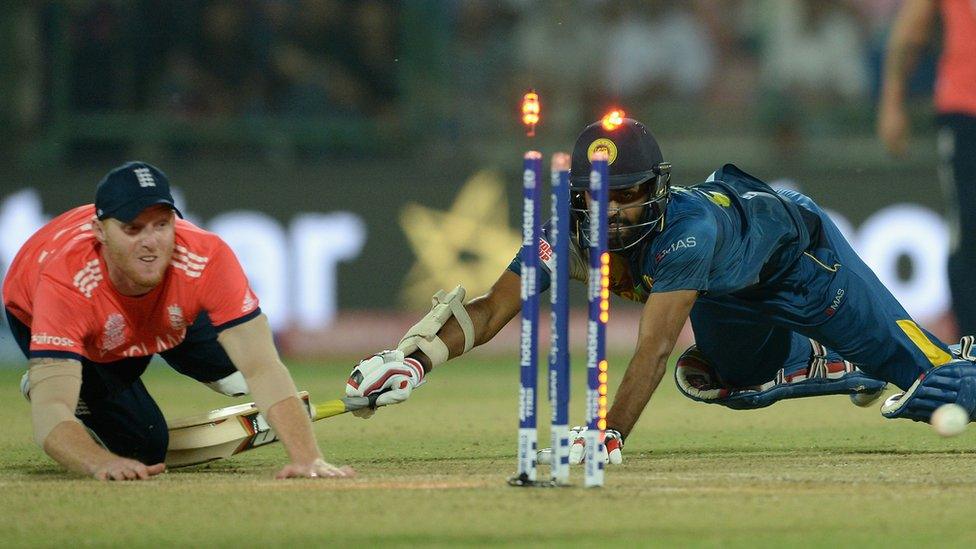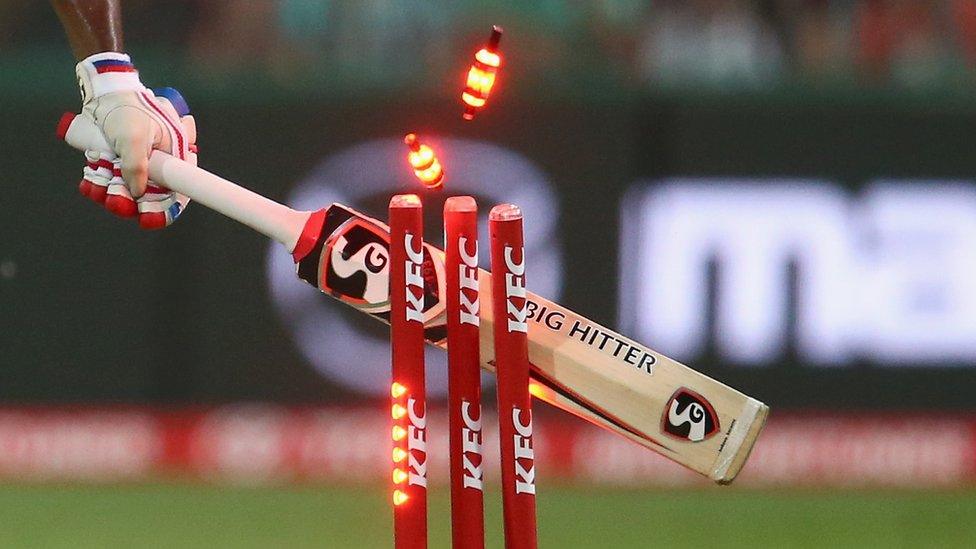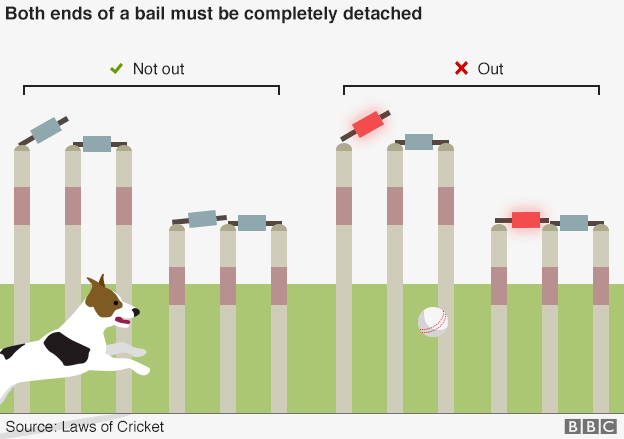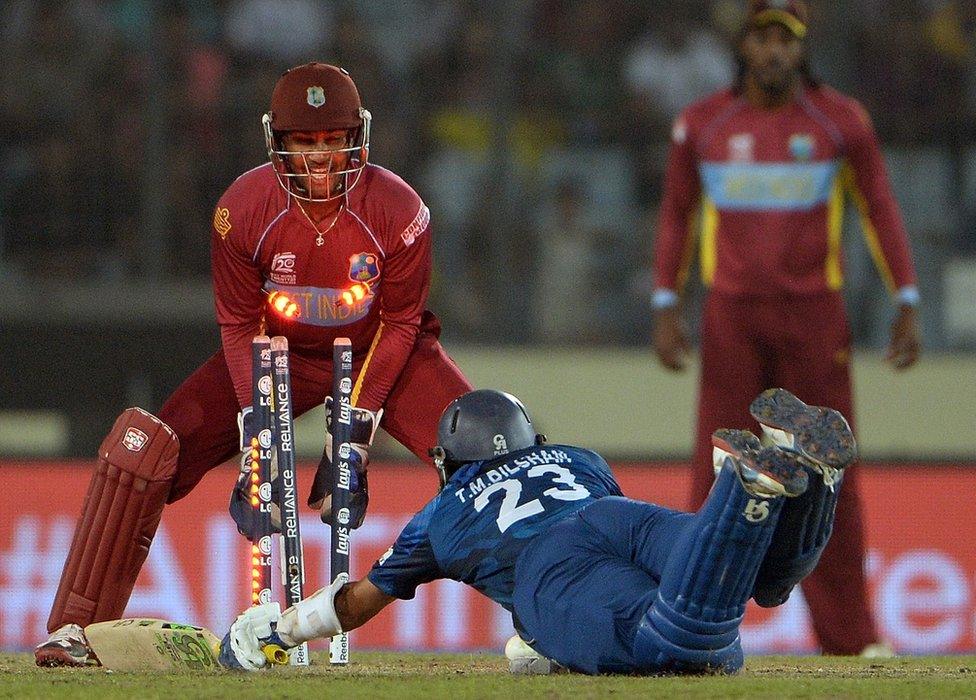World T20: How do the lights on cricket stumps work?
- Published

The England men's team has qualified for the World Twenty20 cricket final. Throughout the tournament, the flashing stumps have drawn plenty of interest from spectators. But how do they actually work, ask Harry Low and Hannah Sander.
Those watching this year's World Twenty20 cricket tournament will probably have noticed that the stumps and the bails, known as a wicket, sometimes start flashing a luminous red.
Traditionally stumps and bails are made from wood, but the new flashing wickets are made from a composite plastic, which are embedded with LED lights.
The use of flashing wickets in international matches was approved by the International Cricket Council in July 2013, and since then they have been used in hundreds of domestic and international matches.

Flashing stumps add to the excitement of one-day cricket but they also have a practical use.
The rules of cricket say that a batsman is out if they are beyond their batting crease when the stumps are "broken" - that is, when the bails are knocked off the stumps. Both ends of the bail have to come apart from the stumps. However, it can be hard for an umpire to detect this in real time.
However, with the new equipment, known as the Zing wicket system, the stumps and bails will flash the moment contact is broken. It was developed by Bronte Eckermann, a former Australian grade cricketer who was inspired by one of his daughter's toys, which was roughly the size of a cricket bail and contained LED lights.

The bails are powered by hidden low voltage batteries. They each contain a microprocessor that detects when contact between the bails and the stumps has been broken. The bails are illuminated within 1/1000th of a second. "They can be vibrated, knocked, rained upon, but will only flash when both ends are completely dislodged from the stumps," explains Eckermann. The microprocessors then send a radio signal to the stumps which also light up.
Flashing bails might have reprieved, external Indian captain MS Dhoni in a Test against England in 2006. He was given out because it was unclear to the umpires whether he had been safely behind the crease at the moment the ball hit the wicket, knocking the stumps to the ground.

The LED bails were first used in an international tournament at the ICC World T20 in 2014
Hundreds of thousands of Australian dollars have been spent developing the technology, turning the humble wooden stumps and bails into an expensive set of equipment.
This means that the sight of players clutching stumps after victory could become a thing of the past.

Former England star Freddie Flintoff takes home a winning stump in St Lucia in 2009
Follow Harry Low @harrylow49, external and Hannah Sander @hsander365, external on Twitter
Subscribe to the BBC News Magazine's email newsletter to get articles sent to your inbox.